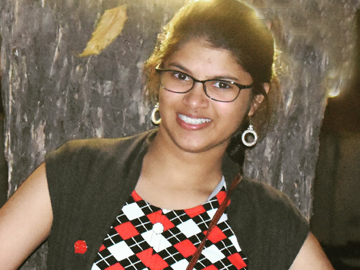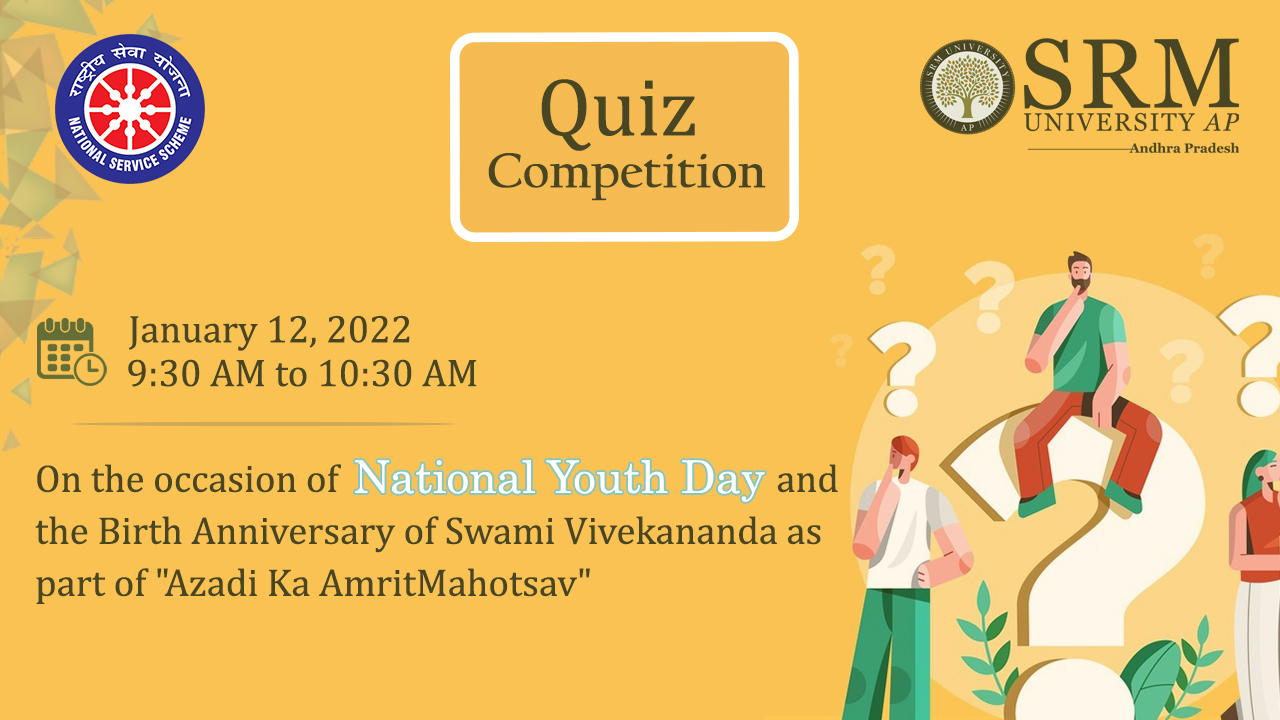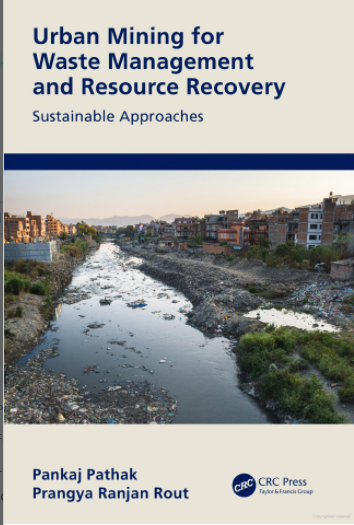Ms Lakshmi Bhargavi presents a paper at IACC-2021 hosted by University of Malta, Europe
 Being a researcher demands commitment, sustained effort, and a high level of inspiration. Ms Lakshmi Bhargavi from 3rd-year Computer Science Engineering has presented a paper titled “Application of distributed back propagation neural network for dynamic real-time bidding” at the 11th International Advanced Computing Conference (IACC-2021), hosted by the University of Malta, Europe. It is a reputed conference indexed in Scopus and DBLP, having H-index 25.
Being a researcher demands commitment, sustained effort, and a high level of inspiration. Ms Lakshmi Bhargavi from 3rd-year Computer Science Engineering has presented a paper titled “Application of distributed back propagation neural network for dynamic real-time bidding” at the 11th International Advanced Computing Conference (IACC-2021), hosted by the University of Malta, Europe. It is a reputed conference indexed in Scopus and DBLP, having H-index 25.
The research is based on the backend of ad placement on websites which involves finances. The process involves finding the best deal between the dealer and the supplier. In the present system, the bid is prefixed, thereby reducing the possibility of optimal budget utilisation. In comparison, Ms Lakshmi’s research uses an ML algorithm, which is dynamic and learns from the previous bids. This research has resulted in 15% lower costs for the suppliers, thereby saving a lot of money and resulting in a better system.
Abstract — Programmatic buying, popularly known as real-time bidding (RTB), is a key ascendancy in online advertising. While data has become essential for targeting and ad performance, data businesses have become difficult to differentiate due to their proliferation, as well as limitations of attribution. This provides an opportunity for Big Data practitioners to leverage this data and use machine learning to improve efficiency and make more profits. In such an opportunity, the research came up with an application of a machine learning algorithm, distributed back propagation neural network, d-bpnn, to predict bid prices in a real-time bidding system. This paper depicts how d-bpnn is used to achieve less eCPM for advertisers while preserving win rate and budget utilisation.
The 11th International Advanced Computing Conference (IACC-2021) was hosted by the University of Malta, Europe, with an H-index of 25. The conference is indexed in Scopus and DBLP and in collaboration with Springer. A few selected papers will be published in SCOPUS/SCI Indexed journals. The presentation was held on 19th December 2021. It was an ideal platform for people to share views and experiences in Futuristic Research Techniques.
Let’s hear from Ms Lakshmi:
My university has been with me in every step taken towards this conference. I would like to thank the mentoring of Dr Priyanka throughout the writing and presentation of the paper. The immense support of SRM AP management, my professors, HOD, Pro VC sir and VC sir made me reach the level to write a paper confidently and show my knowledge to the world.
I feel honoured to present a good paper at a global conference. The experience and connections I made through this conference are priceless. It gave me new insights into several other technical domains. I believe I gave my best at the unique opportunity given to me and hopefully will continue to deliver good work in future too.
- Published in CSE NEWS, News, Research News, Students Achievements
National Youth Day Celebrations 2022 Quiz Competition
 The Department of Student Affairs opened the National Youth Day Celebrations 2022 with an exciting and energetic atmosphere of healthy competition on January 12, 2022, at 9.30 am IST. Over 100 students participated in this event and the race to the top had onlookers at the edge of their seats.
The Department of Student Affairs opened the National Youth Day Celebrations 2022 with an exciting and energetic atmosphere of healthy competition on January 12, 2022, at 9.30 am IST. Over 100 students participated in this event and the race to the top had onlookers at the edge of their seats.
The event was hosted by Ms Revathi Balakrishnan who participated in encouraging the students to give their best. The two student coordinators of the event, Ms Narra Pavani and Ms Anisha Yadlapalli amped up the lively atmosphere in the virtual space.
The National Youth Day is celebrated every year on the occasion of Swami Vivekananda’s birth anniversary. SRM University-AP organised the National Youth Day Celebrations 2022 as a part of “Azadi Ka Amrit Mahotsav”, an initiative by National Service Scheme.
The event was a learning experience for the organisers, the participants, and the observers alike. It shed light upon many well-known and less-known aspects of Swami Vivekananda’s life. It also brought to attention the youth power that our country currently possess.
The first position was obtained by PANCHAKARLA N B S ESWAR – BTech – CSE
The second position was obtained by KUNCHAM PAVAN VITESH – BTech – CSE
The third position was obtained by KOTA JAHNAVI – BTech – CSE
We congratulate the winners along with all other participants of the event for making it memorable, and for keeping the spirit and the momentum of the National Youth Day Celebrations 2022 high.
- Published in News
Say Yes to Life No to Drugs
 The Department of Student Affairs aimed to generate awareness and take an oath to “Say Yes to Life, No to Drugs”. On the occasion of the National Youth Day. A pledge was taken by the SRMAP Family to keep the youth from straying into the dark path of drug abuse.
The Department of Student Affairs aimed to generate awareness and take an oath to “Say Yes to Life, No to Drugs”. On the occasion of the National Youth Day. A pledge was taken by the SRMAP Family to keep the youth from straying into the dark path of drug abuse.
SRM University-AP adheres to creating better environment for the future, better growth for the country and acknowledges the power of youth to achieve this. The degradation of the young into substance abuse hinders their growth and ability to reason. Hence the university would like to play its role in educating and advising the young against the harmful effects of using drugs and spread awareness about it.
- Published in News
Dr Pankaj Pathak edited a book on sustainable environmental solutions
 SRM University-AP is proud to announce that Dr Pankaj Pathak, Assistant Professor, The Department of Environmental Science, has edited a book titled, “Urban Mining for Waste Management and Resource Recovery: Sustainable Approaches” published by Routledge Publications. In an era of climate and global ecological crisis, our researcher has stepped up to promote sustainable environmental solutions.
SRM University-AP is proud to announce that Dr Pankaj Pathak, Assistant Professor, The Department of Environmental Science, has edited a book titled, “Urban Mining for Waste Management and Resource Recovery: Sustainable Approaches” published by Routledge Publications. In an era of climate and global ecological crisis, our researcher has stepped up to promote sustainable environmental solutions.
About the Book:
Scientific management strategies can help in exploring anthropogenic wastes (human-made materials) as potential resources through the urban mining concept and be a panacea for sustainable development. This book covers five broader aspects of waste management and resource recovery in urban mining, including solid and liquid waste management and treatment. It explains sustainable urban mining approaches for the effective management of solid and liquid wastes and facilitates their conversion into secondary resources. Overall, this book provides details of urban mining and its different applications, including current waste management problems, practices, and challenges worldwide.
- Presents a holistic approach for urban mining considering various types of wastes
- Describes contemporary integrated approaches for waste management with specific case studies
- Provides technical, social, and environmental aspects of solid and liquid wastes
- Considers aspects of sustainability and a circular bio-economy
- Incorporates pertinent case studies on water and wastewater management
This volume caters to researchers and graduate students in environmental engineering, solid waste management, wastewater treatment, and materials science aiming for sustainable environmental solutions.
Click Here to learn more about the book from the Publisher’s site.
- Published in Departmental News, ENVS News, News

